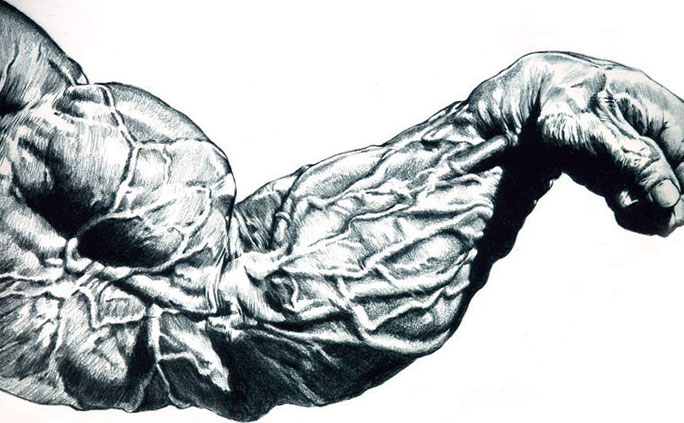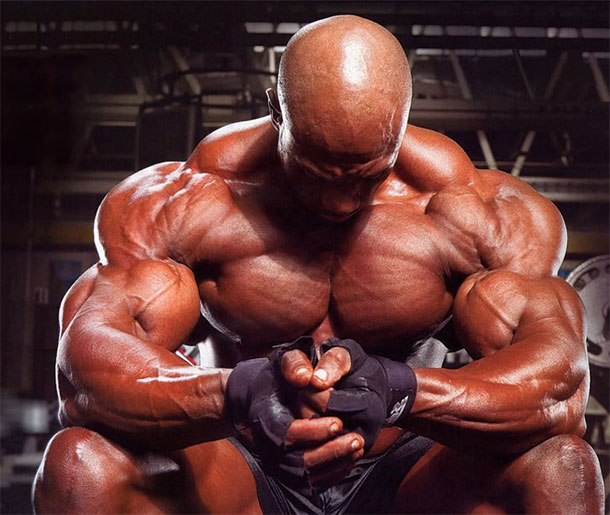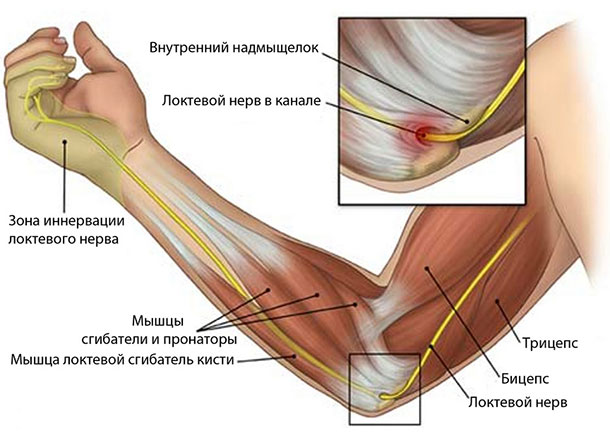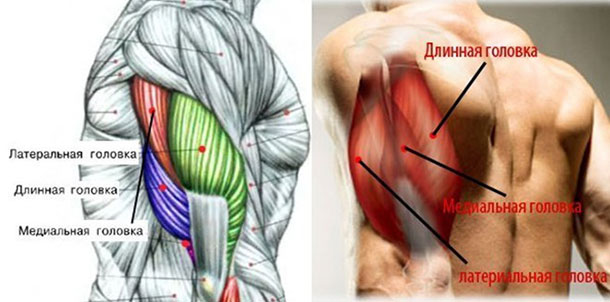Hello readers of my blog and fans of a healthy lifestyle! Today we will take a closer look at the muscles of the arm. We are interested in how they are arranged, what kind of load are biceps, triceps, shoulder.
Why you need to swing them, and how to properly train your arms and forearms. I will cite the most effective exercises, recommendations of experienced trainers.
A little more of everything, but very interesting:
Much knowledge is the root of success
Knowledge of human anatomy will certainly help the athlete to consciously achieve the planned results. And purposefully work on muscle configuration. Here it must be remembered that the architecture of the body should be dealt with in a complex, evenly paying attention to all the muscles. Then you will achieve a harmonious texture.

Therefore, bodybuilders have not only the goal of their work in the gym, but also a sequential exercise pattern, what muscles and how to pump up, and with what tools. On the days of training, muscle complexes are written for individual lessons, since we all differ in our constitution.
If we look at the muscles of the right and left arms, so to speak, in section, we will see bundle-like fibers, which are divided into:
- front, superficial, and
- back, deep.
Flexor and extensor shoulder muscles and forearms. Each has its own names. Those responsible for the flexion movements are called:
- shoulder;
- two-headed;
- coracohumeral.
And the second row of responsibility for extensor -
- ulnar;
- three-headed.
Most of all we are talking about biceps, triceps, delts. These are the superficial muscles of the human hand.
Biceps - a biceps muscle, one head is long, the other is short. Thanks to him, the upper part of the arm bends, the palm, the shoulder rotate.

The triceps muscle, called the triceps, starts from the back, or rather from the scapula, and extends to the elbow. This muscle is used to flex and extend the arm at the elbow and shoulder.
The forearm is represented by the following muscles:
- brachialis;
- coracoid;
- radial flexor of the wrist;
- brachyradialis.
They also have to do with elbow, forearm rotation, finger extension, and pulling the arms towards the chest. Imagining how these muscles work, you more clearly understand which shells and exercises should be chosen to strengthen the arms.
What exercises train hands
Biceps are one of the most attractive parts of a muscular, athletic male body. A beautifully formed muscle is admirable. Pump up biceps productively with a barbell and dumbbells.
- Lifting the iron while standing.
- Reverse grip pull-ups.
- Seated incline dumbbell lift.
- Bench press with a narrow grip.
- Reverse push-ups from the bench.
- Dips on the uneven bars.
As for the forearm, these are the best exercises:
- Reverse grip barbell lift.
- Lifting dumbbells with a hammer grip.
- Lifting the barbell on your knees from the bench.

It happens that you have no time to visit the gym: it is far from home, the working hours of the gym do not coincide with your working regime, or for other reasons. Do not despair, it is possible to build a sculptural body, pump up beautiful arms, monitor the growth of the muscles of the arms and legs at home.
It's good when you have dumbbells and a barbell at home. Start with a low weight and build up as you build up muscle mass. Don't forget to warm up beforehand. Then neither fatigue nor injury will distract you from progressive development.
You can, of course, do with dumbbells alone, and even without them. Practice dumbbell flexion and extension.
In the absence of those, push-ups will replace them:
- Close-grip push-ups.
- Wide grip push-ups.
- Push-ups with cotton in front or behind.
Or pull-ups on the bar. Two workouts a week will be enough. Pull up to ten times per set, do three to four sets. Or you can just hang on the bar. Make a table for adding the number of repetitions every day. This will help to trace the dynamics of the development of the arm muscles.
There are risks involved in home workouts. They require inner discipline, even perfectionism. Some have to overcome elementary laziness.

If you do not have a home workout room, the small space, the need for large amounts of fresh air, will constrain the workout. If you're an introvert, the absence of colleagues will not affect your schedule in any way. More difficult for an extrovert - the monotony of the environment takes time to tune in to classes.
Athletes sometimes experience muscle discomfort as a result of intense training. Hands hurt in the area of the shoulders, hands. It can be stretching, pain can cause rupture of tendons, muscles from overload.
In such cases, it is worth taking a break from training, applying an analgesic balm, lotion, ointment to the sore spot. If the pain persists within a week, consult a traumatologist who will prescribe intensive treatment.
Remember that muscle grows during deep rest. Sleep is supposed to be at least eight hours a day. However, each bodybuilder has a different sleep rate, someone needs more hours to recover.

Not in the last place when pumping up the muscles of the arms is nutrition. If done correctly, 85% success is already guaranteed. The general rule is: proteins (1.5 g per kilogram of weight), less carbohydrates (fast - sugar, of course, bread, pastries), only for energy production (porridge, pasta) and only in the morning.
Before going to bed - protein food. You can have small quantities of vegetables and fruits. From sports nutrition - protein shakes are useful and convenient, especially during workouts.
Now a few words about psychological adjustment. Visualize your workouts even when you are not in the gym. Work mentally to the smallest detail all the movements. Imagine it works.
Develop! Subscribe to updates on my blog, express your opinions, share with your friends on social networks. You know more - you can do more! All health!
